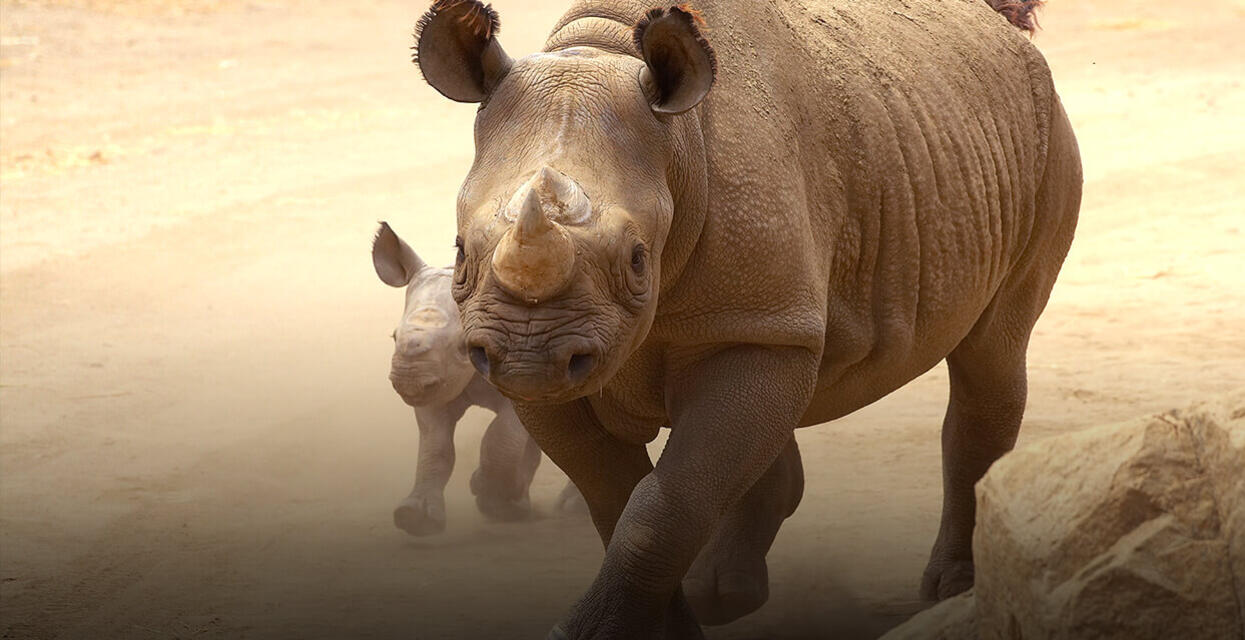Conservation Status: IUCN Red List - Critically Endangered
Threats to survival: Poaching; habitat loss and fragmentation; disease
Challenges for Wild Populations
The international trade in rhino horn is the main cause of the decline of the black rhino. Civil unrest and armed conflict have made effective protection of the species very difficult. In addition, disease, low reproductive rates, and uneven sex ratios all serve to restrict the ability of rhino populations to achieve desired growth rates and preserve genetic diversity for the future. Together with our partners, San Diego Zoo Wildlife Alliance is committed to securing wild populations of black rhinos and achieving population sustainability. Eighteen black rhinos belonging to two different subspecies have been born at the San Diego Zoo and Safari Park and educating the public about the plight of all rhinos is a high priority for us.
Genetics of Disease
Our Frozen Zoo® includes viable cell cultures from 78 black rhinos, including animals born in the wild. Eleven black rhinos were sampled in Zimbabwe when rhino de-horning was being tested as an anti-poaching strategy, resulting in the successful establishment of frozen cell cultures. Our Conservation Genetics team has conducted research into the evolutionary diversification of black rhinos and identified variation in chromosomal patterns indicative of limited gene flow that support subspecies designations. Diseases, including the bacterial infection leptospirosis and iron storage disorder, have impacted black rhinos in zoos. A vaccine now reduces risk of leptospirosis, but dietary accumulation of iron to toxic levels remains an ongoing management concern. Our scientists are contributing to collaborative efforts to understand the genetic basis of iron storage disease risk in black rhinos using genomic technologies.
Improving Translocation Success
Translocations of black rhinos have been an important conservation tool to expand rhino populations and to remove black rhinos from areas with high poaching risk to more secure locations. Our Recovery Ecology team has devised new methods for improving translocation success by pre-seeding release sites with rhino dung in order to reduce aggression between resident and newly arrived black rhinos. San Diego Zoo Wildlife Alliance has assisted other organizations with the costs associated with black rhino relocations to protect animals from intensifying poaching pressure.











